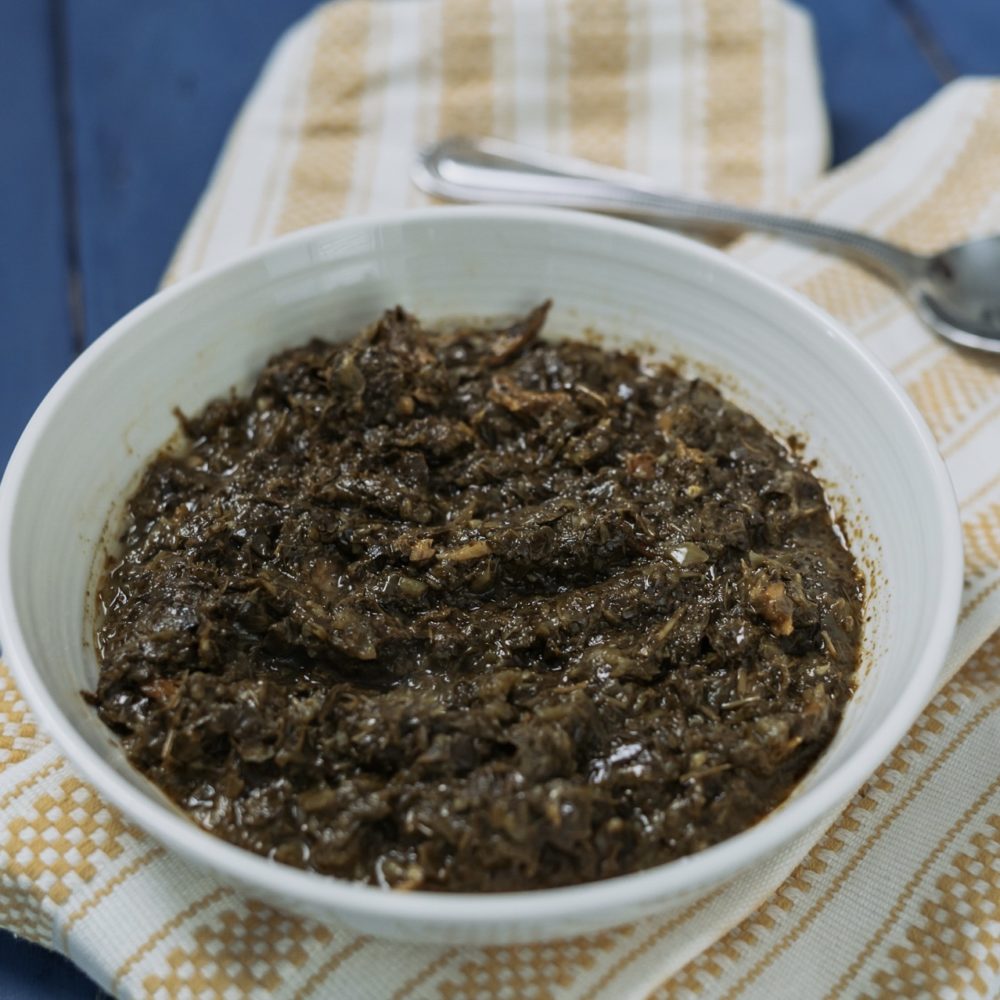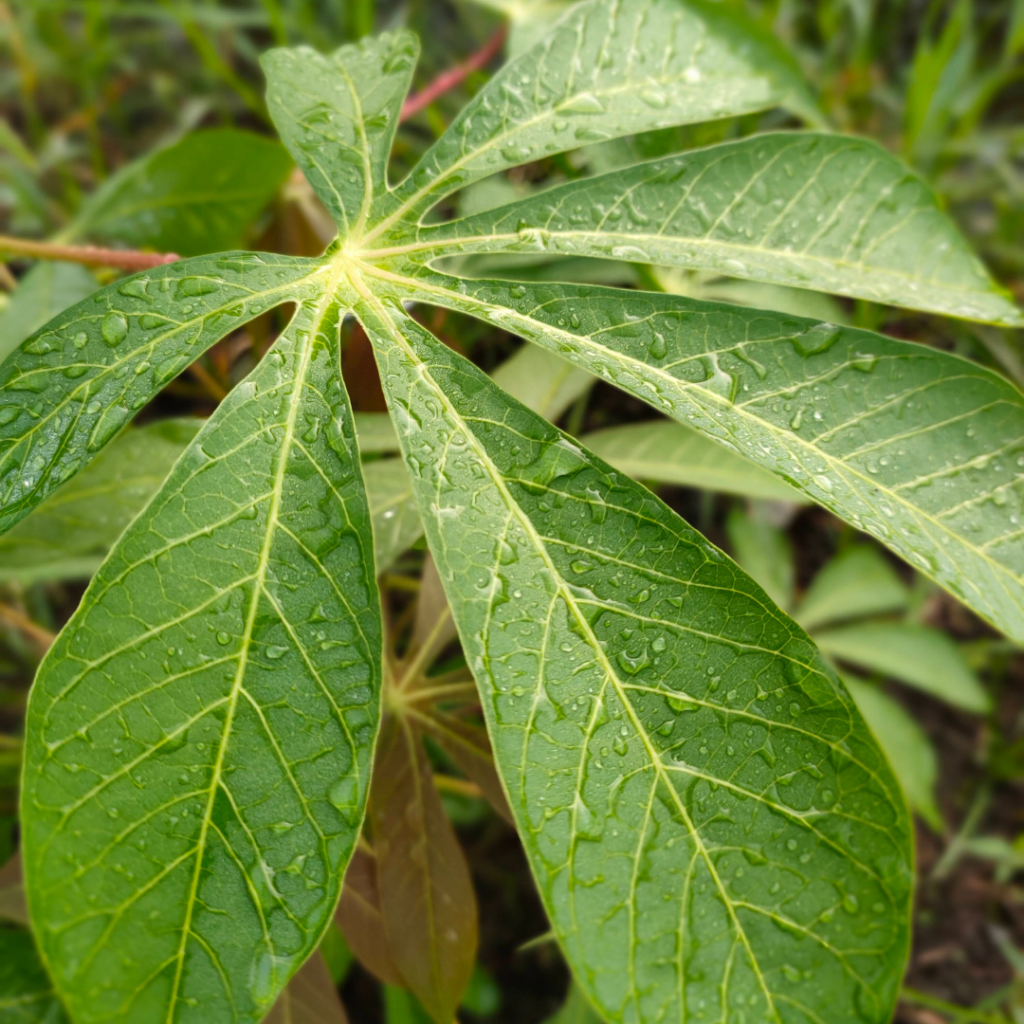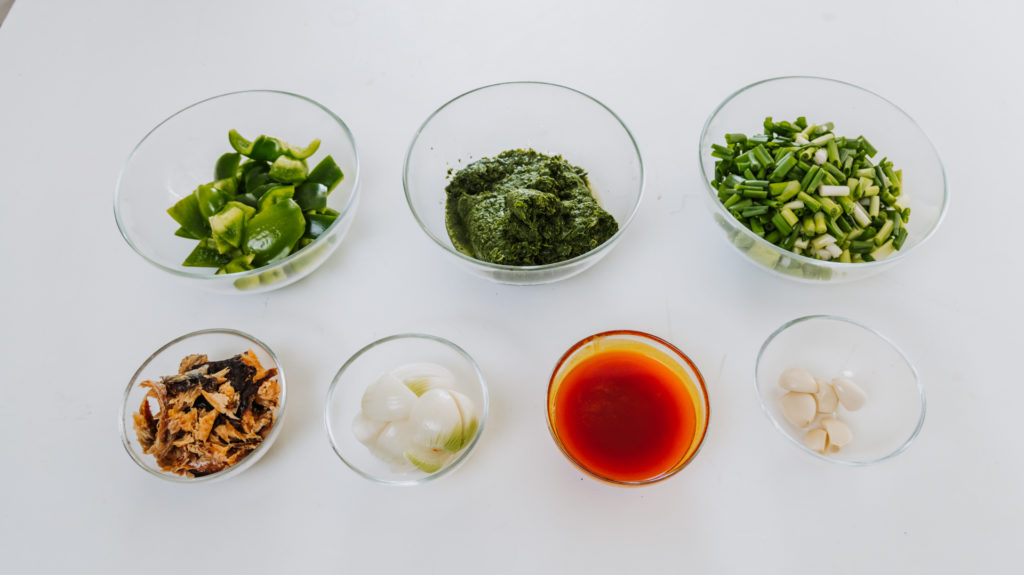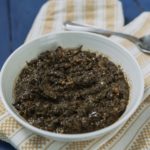
If you’ve ever wondered how to cook Congolese cassava (pondu) the right way, you’re in the right place! Pondu, also known as cassava leaves stew, is one of Congo’s most beloved dishes—rich, earthy, and full of heart. Growing up, this was more than just a meal; it was a weekend ritual, a way to bring the family together around something deeply comforting and flavorful.
Cassava leaves are slow-cooked until tender and infused with fragrant spices, onions, and palm oil, creating a dish that’s both nutritious and satisfying. Whether you’re Congolese living abroad and craving a taste of home or you’re new to African cuisine and ready to explore bold new flavors, this recipe will show you how easy and rewarding it is to make pondu from scratch.
What are cassava leaves?

Cassava leaves are the leafy greens from the yucca (cassava) plant, which grows abundantly in tropical regions of Africa. In the Congo, they’re as essential as collard greens in the American South or spinach in Europe.
Traditionally, families grow cassava in their gardens and use both the roots (for fufu or chikwangue) and the leaves for savory stews. Outside Africa, you can find frozen cassava leaves in international grocery stores or African markets.
When cooked, cassava leaves have a slightly earthy, nutty flavor that pairs beautifully with palm oil, smoked fish, and aromatics.
What are cassava leaves’ health benefits?

Not only are cassava leaves delicious, but they’re also incredibly nutritious. They’re rich in:
- Iron and calcium — great for maintaining strong bones and healthy blood.
- Vitamin C and A — which support your immune system and glowing skin.
- Fiber and water — to help digestion and keep you full longer.
It’s an affordable, plant-based superfood that fits perfectly into a healthy African diet or anyone looking to eat more vegetables and natural foods.
You can learn more about cassava health benefits.
How do you store cassava leaves?
If you make a large batch (which I always recommend), you can store cooked cassava leaves in the fridge for up to 3–4 days. They also freeze beautifully — just portion them into containers, and they’ll keep for months.
How do you make cassava leaves recipe?

Ingredients You’ll Need
Here’s what you need to make authentic Congolese cassava leaves (pondu):
- 500 g frozen cassava leaves
- 1 bunch of green onions
- 1 bulb of garlic
- 2 yellow onions
- 1 leek
- 2 green peppers
- 1 cup palm oil
- 2 tablespoons salt
- 1 smoked fish (rehydrated)
- 1 green habanero pepper (optional)
This recipe is simple, hearty, and full of rich African flavors.
- Prepare the smoked fish
Rehydrate the smoked fish in boiling water for about 20 minutes. Once softened, clean it by removing bones and skin, keeping only the flesh. Set aside. - Blend the aromatics
In a blender or food processor, combine onions, garlic, green onions, leeks, and green peppers until smooth. - Cook the cassava leaves
In a large pot, combine the cassava leaves and blended mixture. Add enough water to cover the leaves, then bring to a boil on high heat. - Add palm oil and salt
Pour in the palm oil and season with salt. Let it simmer for about 30 minutes. - Add smoked fish and pepper
Add the smoked fish and the whole habanero pepper for extra flavor. Continue to simmer for 1 hour, adding about 2 cups of water each time it reduces.
The result? A thick, flavorful stew packed with smoky, nutty, and slightly spicy notes — the very essence of Congolese home cooking.
What to Serve with Cassava Leaves
Cassava leaves (pondu) pair perfectly with:
- Fufu (cassava, plantain, or semolina)
- White rice or coconut rice
- Boiled plantains
- Steamed beans
- Groundnut sauce (peanut stew)
It’s a versatile dish that complements almost anything.
Tips for the Perfect Cassava Leaves
- Use frozen cassava leaves if fresh ones aren’t available.
- Don’t skip the smoked fish — it adds depth and umami.
- Add water gradually to develop richer flavor.
- Pondu tastes even better the next day after the flavors have blended together.
Why You’ll Love This Pondu Recipe
- Authentic Congolese flavor — straight from my kitchen to yours.
- Healthy and vegan-friendly — full of vitamins and minerals.
- Simple ingredients — easy to find and easy to cook.
- Comfort food with culture — each bite tells a story of Africa.
More Recipes You’ll Enjoy:
Poulet Mayo recipe (chicken with mayonnaise) from Congo
Red fufu with lamb chops and sautéed spinach
Sorrel (Ngayi ngayi) salad recipe
Final Thoughts
If you’ve never tried cassava leaves before, this is your sign to make them. It’s a comforting, flavorful dish that connects you to Africa’s heart — and to generations of cooks who’ve perfected it over centuries.
Make it once, and it’ll quickly become a regular at your table — just like it is at mine.
Print
Cassava leaves (Pondu) recipe
- Prep Time: 15 min
- Cook Time: 2 h
- Total Time: 2h 15 min
- Category: lunch, dinner
- Method: cooking
- Cuisine: African
- Diet: Vegan
Description
A classic cassava leaves recipe from Congo
Ingredients
- 500 g frozen cassava leaves
- 1 bunch of green onions
- 1 bulb of garlic
- 2 yellow onions
- 1 leek
- 2 green peppers
- 1 cup palm oil
- 2 tablespoons salt
- 1 smoked fish (rehydrated)
- 1 green habanero pepper (optional)
Instructions
This recipe is simple, hearty, and full of rich African flavors.
-
Prepare the smoked fish
Rehydrate the smoked fish in boiling water for about 20 minutes. Once softened, clean it by removing bones and skin, keeping only the flesh. Set aside. -
Blend the aromatics
In a blender or food processor, combine onions, garlic, green onions, leeks, and green peppers until smooth. -
Cook the cassava leaves
In a large pot, combine the cassava leaves and blended mixture. Add enough water to cover the leaves, then bring to a boil on high heat. -
Add palm oil and salt
Pour in the palm oil and season with salt. Let it simmer for about 30 minutes. -
Add smoked fish and pepper
Add the smoked fish and the whole habanero pepper for extra flavor. Continue to simmer for 1 hour, adding about 2 cups of water each time it reduces.
Please send me more information on cassava leaf. Thank you
what would you like to know?
Kodongola pondu en français
Thank you for this recipe. Will the cassava go into the food processor as well or will I just be adding the leaves to the pot with my onion mixture?
If you have access to fresh cassava, you will need to deep the leaves for a few minutes in water that I have been just boiled to get rid of the cyanide. After that you can put it in the food processor separately from the other ingredients then put everything in a pot.
If you have frozen cassava leaves, skip that step and put them in a pot and then add your onion mixture.
I hope this helps. 🙂